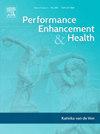“Big-blast, little-blast”: Risk neutralization strategies for sustaining masculinity by older men who use anabolic androgenic steroids (OMAAS)
IF 3.7
Q2 HOSPITALITY, LEISURE, SPORT & TOURISM
引用次数: 0
Abstract
UK research in the past decade has indicated the emergence of a cohort older men who use anabolic androgenic steroids (OMAAS), with studies suggesting OMAAS are motivated to use for aesthetics, performance enhancement, to combat the effects of ageing, and for perceived testosterone replacement therapy associated with wellbeing. Currently, there is a lack of information on the experiences and perspectives of harm reduction workers who support OMAAS at needle and syringe programmes in the UK. Semi-structured in-depth interviews (N = 13) with harm reduction workers were conducted to explore their experiences of engagement with OMAAS and how they view their healthcare and support needs.
The analysis generated four key themes with subthemes: 1) AAS Use Patterns of Older Men Accessing Healthcare Services; 2) Motivations for AAS Use; 3) Adverse Health Effects; 4) and Healthcare Responses to OMAAS. Two higher levels of abstraction centred on ‘risk neutralization’ and ‘masculinity’ were identified above the theme level and were described by all harm reduction workers in distinct ways throughout the findings. They focused on scapegoating, self-confidence, and risk comparison as strategies to uphold masculine values and identity through AAS use.
The findings are useful in informing AAS specific training for harm reduction workers, medical and healthcare professionals, and age-appropriate healthcare and treatment pathways specific to the needs of OMAAS who engage in risk neutralization techniques to conform to traditional masculine norms. There is a need for accessible, adequate, non-judgemental AAS-specific treatment and care pathways for OMAAS. Needle and syringe programmes should be developed to implement and evaluate interventions such as blood testing, cardiac monitoring, substance testing, and rapid access and referral pathways for medical support. Medical professionals and harm reduction workers at needle and syringe programmes are urged to address issues with OMAAS’ perceptions of masculinity to help prevent and encourage safer use.
“大爆炸,小爆炸”:使用合成代谢雄激素类固醇(OMAAS)的老年男性维持男子气概的风险中和策略
英国过去十年的研究表明,出现了一群使用合成代谢雄激素类固醇(OMAAS)的老年男性,研究表明,OMAAS被用于美学、提高表现、对抗衰老的影响,以及与健康相关的睾酮替代疗法。目前,在英国的针头和注射器规划中,缺乏关于支持OMAAS的减少伤害工作者的经验和观点的信息。对减少伤害工作者进行了半结构化的深度访谈(N = 13),以探讨他们参与OMAAS的经历以及他们如何看待自己的医疗保健和支持需求。分析产生了四个关键主题和子主题:1)老年男性获得医疗服务的AAS使用模式;2)使用AAS的动机;3)对健康的不良影响;4)和医疗保健对OMAAS的响应。以“风险中和”和“男子气概”为中心的两个更高层次的抽象概念被确定在主题层面之上,并且在整个研究结果中被所有减少伤害的工作者以不同的方式描述。他们将替罪羊、自信和风险比较作为通过使用AAS来维护男性价值观和身份的策略。研究结果有助于为从事风险中和技术以符合传统男性规范的OMAAS提供针对减少伤害工作人员、医疗和保健专业人员的具体培训,以及适合年龄的医疗保健和治疗途径。有必要为OMAAS提供可获得的、充分的、非判断性的aas特异性治疗和护理途径。应当制定针头和注射器方案,以实施和评价诸如血液检测、心脏监测、物质检测以及快速获得和转诊医疗支持途径等干预措施。敦促针头和注射器方案的医疗专业人员和减少伤害工作人员解决与奥巴马政府对男子气概的看法有关的问题,以帮助预防和鼓励更安全地使用。
本文章由计算机程序翻译,如有差异,请以英文原文为准。
求助全文
约1分钟内获得全文
求助全文
来源期刊

Performance enhancement and health
Social Sciences-Health (social science)
CiteScore
4.70
自引率
0.00%
发文量
27
审稿时长
57 days
 求助内容:
求助内容: 应助结果提醒方式:
应助结果提醒方式:


